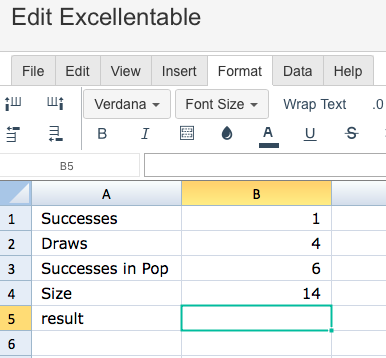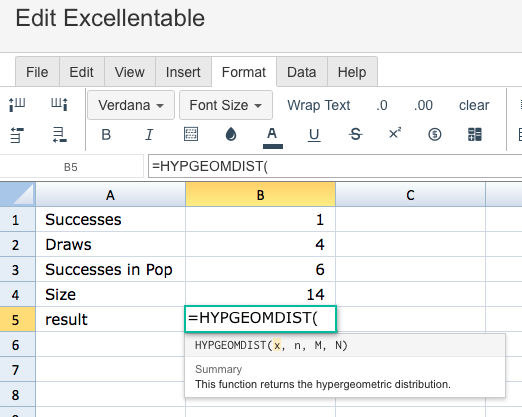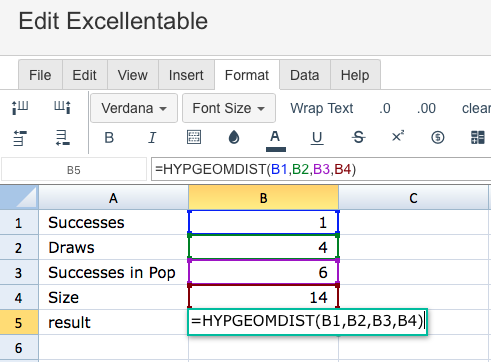HYPGEOMDIST
Definition/Description of Formula:
Calculates the probability of drawing a certain number of successes in a certain number of tries given a population of a certain size containing a certain number of successes, without replacement of draws.
Syntax:
HYPGEOMDIST(x, n, M, N)
- x - The desired number of successes.
n- The number of permitted draws.- N - The total number of successes in the population.
- M - The total size of the population
Notes
BINOMDISTdescribes the probability of drawing a certain number of successes in a certain number of tries given a population of a certain size containing a certain number of successes, with replacement of draws.
See Also:
NORMSDIST: Returns the value of the standard normal cumulative distribution function for a specified value.
NORMINV: Returns the value of the inverse normal distribution function for a specified value, mean, and standard deviation.
NORMDIST: Returns the value of the normal distribution function (or normal cumulative distribution function) for a specified value, mean, and standard deviation.
NEGBINOMDIST: Calculates the probability of drawing a certain number of failures before a certain number of successes given a probability of success in independent trials.
LOGNORMDIST: Returns the value of the log-normal cumulative distribution with given mean and standard deviation at a specified value.
LOGINV: Returns the value of the inverse log-normal cumulative distribution with given mean and standard deviation at a specified value.
BINOMDIST: Calculates the probability of drawing a certain number of successes (or a maximum number of successes) in a certain number of tries given a population of a certain size containing a certain number of successes, with replacement of draws.
To use the HYPGEOMDIST Formula, simply begin with your edited Excellentable:

Then begin typing the HYPGEOMDIST formula in the area you would like to display the outcome:


A
|
B
|
|
|---|---|---|
1
|
||
2
|
||
3
|
||
4
|
||
5
|
